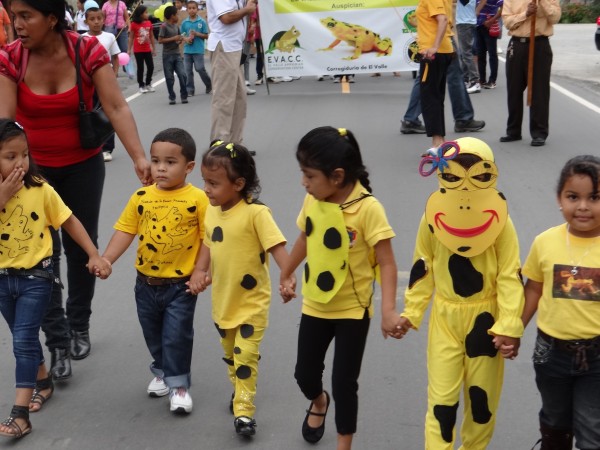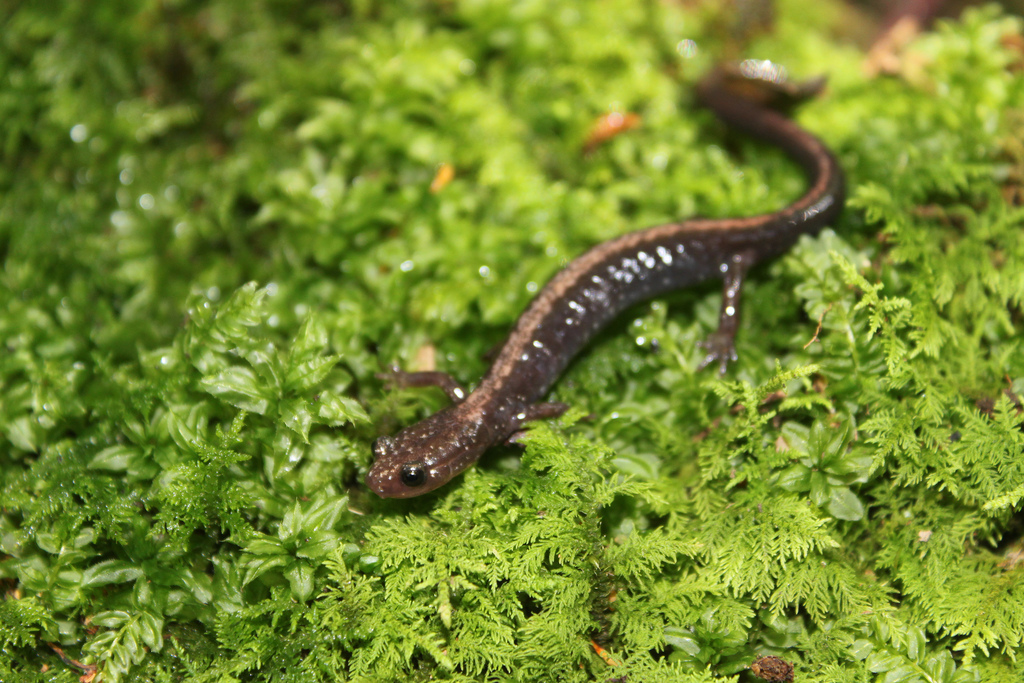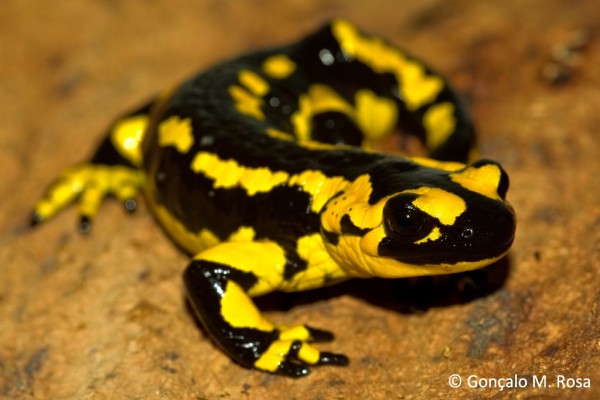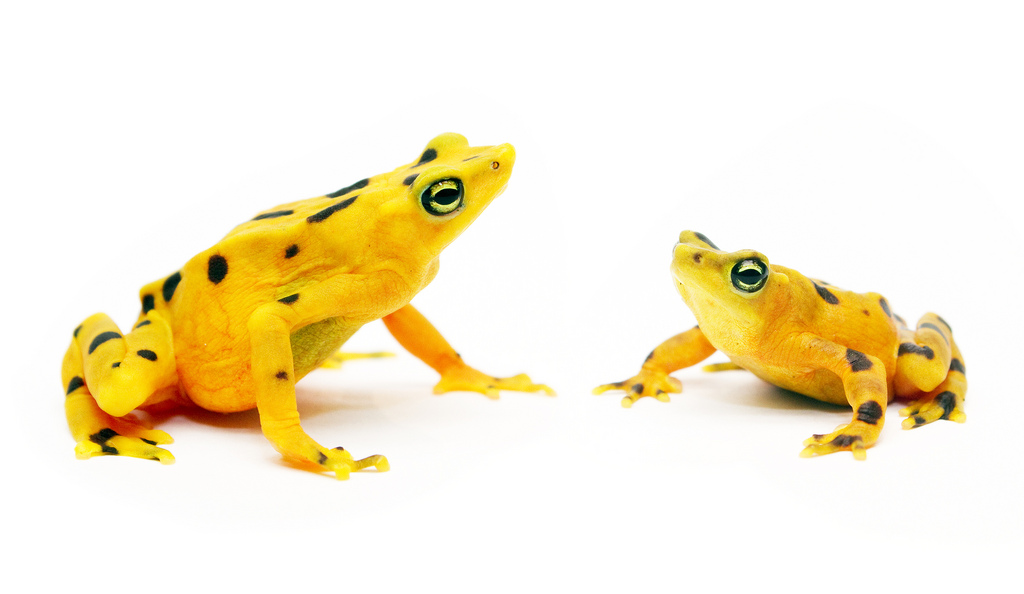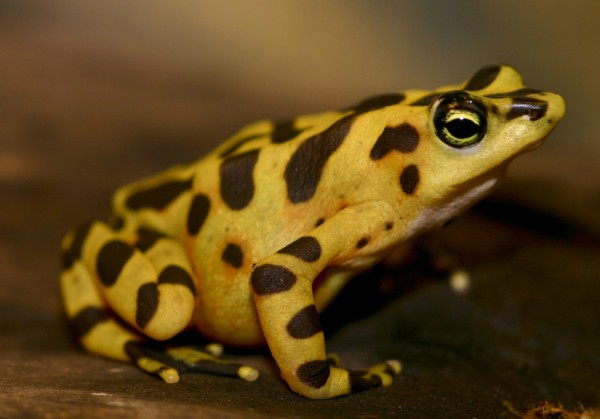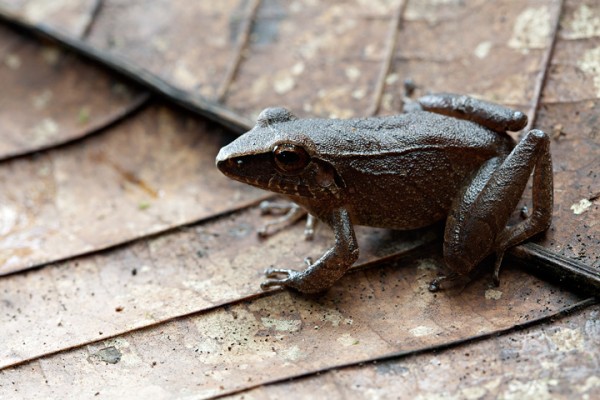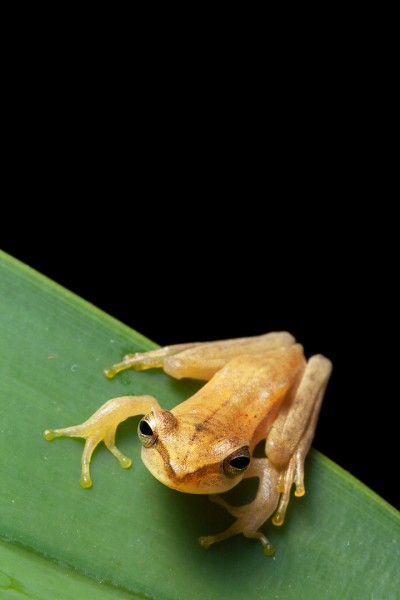August 10th through August 13th marked the celebration of Golden Frog Day for the Panama Amphibian Rescue and Conservation Project. The week prior, the entire staff worked hard to put together a unique experience for visitors in Panama. STRI researchers in nearby Gamboa captured túngara frogs, Savage’s thin-toed frog, gladiator frogs, leaf frogs and glass frogs for public display. Everyone took turns blowing up hundreds of yellow and black balloons. Without such team effort, we would not have been able to pull off this event.
The rescue project does not have any actual specimens of the golden frog, Atelopus zeteki, and because the species is extinct in the wild, we were repeatedly asked where the golden frogs are. This allowed for us to discuss the importance of amphibian conservation and of the rescue project, EVACC and other amphibian conservation efforts around the world. Staff members educated visitors about the frogs that were on display, and scientists studying tungara frogs in Gamboa set up a small exhibit to educate the public about the research being conducted by STRI scientists.
Seeing children become so enthused about frogs instills a wonderful feeling in a herpetologist. Over the course of the weekend, nearly 1,000 children visited the event. Every day there was an activity station set up for the kids to paint frog masks, and winners were selected from each group. On Saturday, we had use of a bouncy house and bungee race, which undoubtedly led to many tired kids (and grateful parents). But the highlight of the children’s day was always the frogs. Tiny faces lit up and smiled time and time again every time they saw the tadpoles swimming, the túngaras hopping, or even just the size of the sedentary Savage’s thin-toed frog.
Events like the one held that weekend demonstrate the importance and effectiveness of educational outreach. 1,000 children over the course of three days (along with uncounted adults and family members) mean that the rescue project was able to spread the word out about the necessity of preserving biodiversity. The fact that this weekend was dedicated to the golden frog, a national symbol of Panama that now exists only in captivity, underscores the urgency to address worldwide amphibian declines.
We thanked MEDUCA (Ministry of Education) who made it possible for 310 students to visit; Aid4Aids staff; kids and parents who made our Saturday an unforgettable day; all the staff at Summit Municipal Park, especially to: Melgar, Itzel and Adalberto. Lastly, a special thanks to the volunteers (Ximena, Jesse, Laura, Kristen, Jennifer, Jose Maria, Meghan, Andrew, Kelsey, Shanta, Natalie, Ana, Giancarlo, Alexis, Sangie, Dania, Anayansi, Kristel, Digna and Katherine) who helped keep everything flowing in an orderly manner the entire weekend!
—Norman Greenhawk, rescue project volunteer; and Angie Estrada, rescue project coordinator


